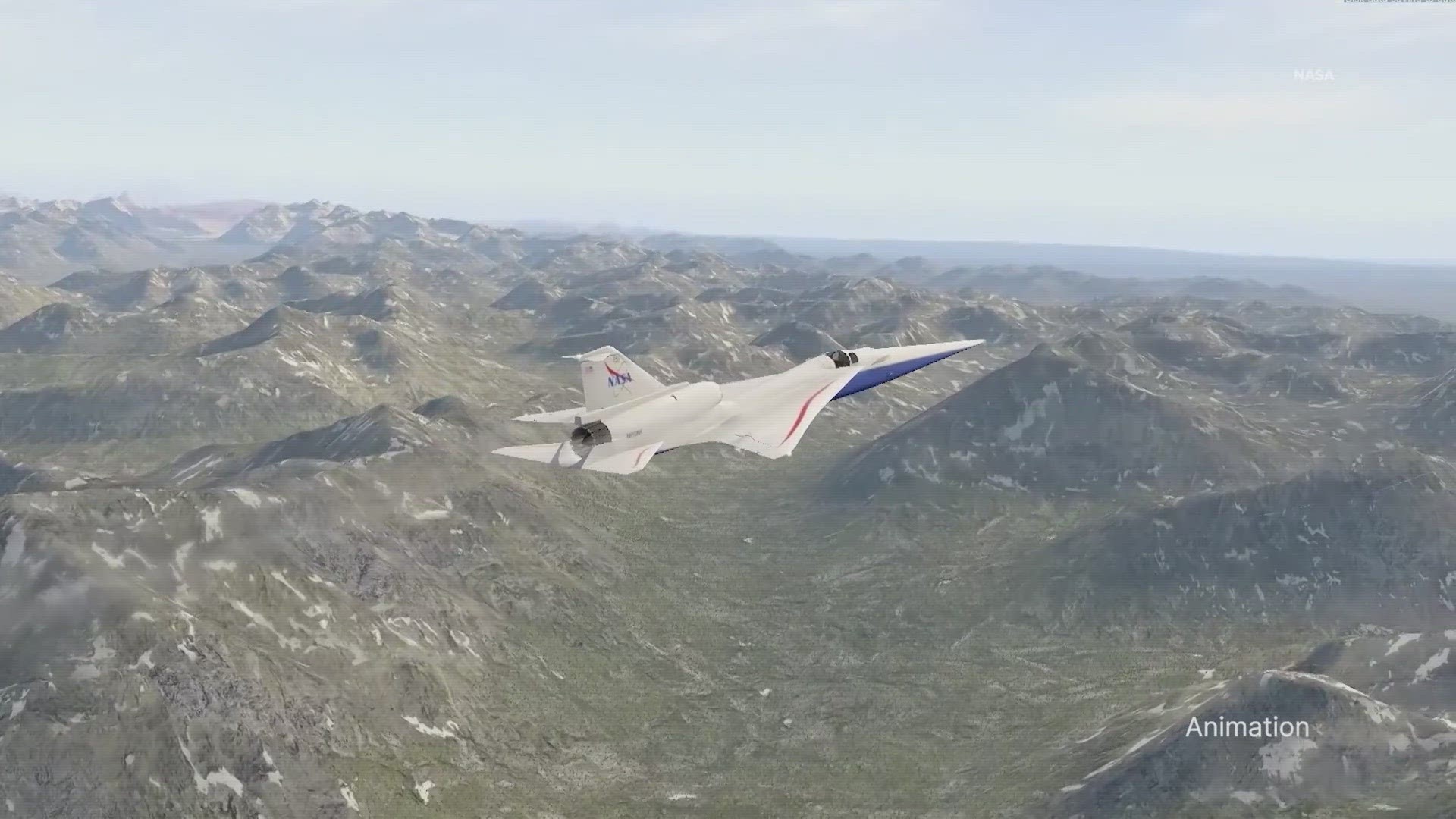ARLINGTON, Texas — As a PhD student in aerospace engineering at UT Arlington, Cody Harris’ future is up in the air.
“Designing anything that belongs in the air is always something I’m interested in,” Harris said.
Anything that flies is his obsession. That’s why a few weeks ago, he watched as NASA dropped the curtain on a revolutionary mission. A mission that began more than 50 years ago.
In the 1970s, supersonic airplanes, planes that can fly faster than the speed of sound (roughly 760 mph), were thought to be the future of travel.
The most notable supersonic plane, the Concorde, could fly passengers from New York to London in less than three hours, a trip that takes seven hours in today’s commercial airliners.
When Dallas-Fort Worth International Airport opened in 1973, the Concorde was there, the first time it had landed on American soil. It signaled, at the time, what airport officials hoped would be a hub for supersonic travel.
However, fantasies of flying fast never came to fruition.
The Concorde, and other supersonic planes, had one startling problem: The sonic boom, the sound made when a plane flies faster than the speed of sound, is like an explosion, terrifying for anyone on the ground.
“It’s really just shocking,” said Lori Ozoroski, commercial supersonic technology project director at NASA. “You really are shocked and scared by a full, loud sonic boom.”
For that reason, it’s now illegal for commercial aircraft to fly that fast over land. It was banned in the 1970s.
“That has essentially put a speed limit on over land travel,” said Jim “Clue” Less, a NASA research pilot.
Of course, the best way to solve that problem is to fly faster than the speed of sound without producing a sonic boom. However, figuring out the science is incredibly hard and there’s never been a plane that could do it.
Until now.
The X-59, NASA's latest experimental plane and part of its Quesst Mission, produces a sonic thump rather than a sonic boom. Engineers say it sounds like a car door closing in the distance.
The secret is in the design.
“Long and skinny is the key,” said Less, one of the pilots who will fly the X-59. “It spreads out the shockwaves, keeps them from merging into a boom sound and instead gives more of a thump or a rumble.”
Due to its long and skinny design, the plane has many unique features that help quiet the sonic boom. The cockpit has no forward-facing window, meaning pilots will have to fly the plane without being able to see what’s in front of them through the plane’s window.
“I’ve never done it,” Less said. “Charles Lindbergh flew across the ocean without a window, but he could hang his head out the window and see where he was going. For the X-59, we’ve developed a system called the XVS, the external vision system, which is basically just a camera and a TV monitor mounted in the cockpit that will allow us to see where we’re going without being able to look out the window.”
NASA partnered with Lockheed Martin to build the X-59 and ground tested the plane in Fort Worth.
The X-59 will perform five flight tests starting later this year.
“This would revolutionize air travel because now you can get where you’re going twice as fast,” Less said.
Passengers could potentially fly from New York to London and back in a day.
During flight tests, Ozoroski and her team will gather data from people on the ground.
“We’ll ask them, ‘Did you hear anything? How annoyed were you?’” she said.
NASA will release its findings to regulators, hoping to get rid of speed limits and instead institute a noise limit, giving commercial companies the ability to fly as fast as possible.
“At that point it is up to a commercial entity to move forward with designing and producing a commercial, supersonic aircraft,” Ozoroski said.
If successful, it’ll likely be at least a decade before travelers can hop on a supersonic flight, which, for those who’ve spent decades engineering the solution, is well worth the wait.
“The main thing it will do is cut away the very large portion of the red tape holding back supersonic flight,” Harris said. “It’s a physical proof that we’re making progress.”
With no sign of slowing down.

